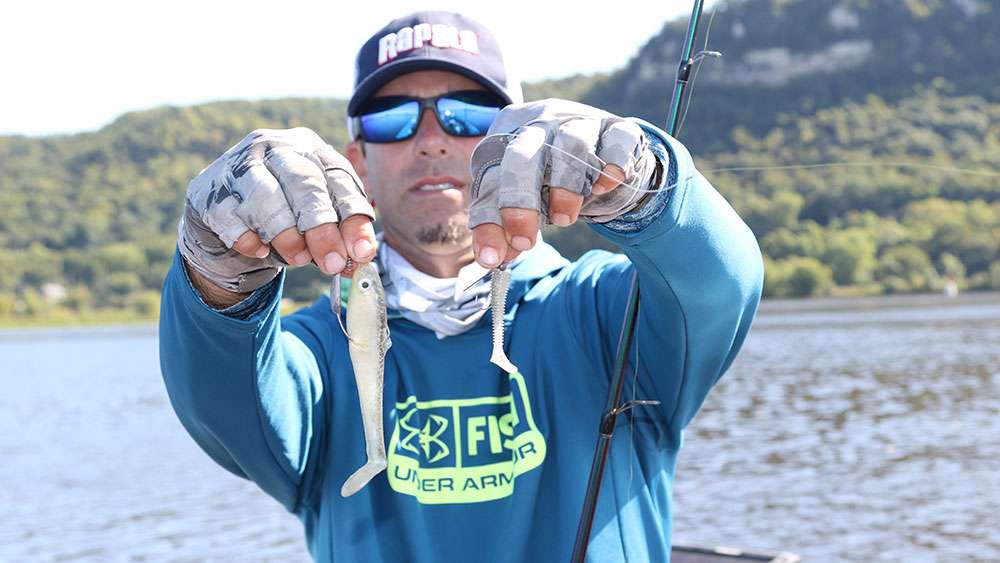
It was really a hopeless situation, a matter-of-time kinda deal — at least for the baitfish. During a morning on the Upper Mississippi River’s Pool 4, Mike Iaconelli located a baitfish death trap, and the raw violence unfolding before our eyes told us that we were clearly late to the party.
In the notch between the river and a side channel, a shallow cove held a cup-shaped bar with scattered wood, lots of narrow river grass and current sneaking over top. The flowing water had jammed an absolute pile of tiny baitifsh into what Iaconelli called a saddle — basically a cul-de-sac into which the 1- to 2-inch forage had become trapped.
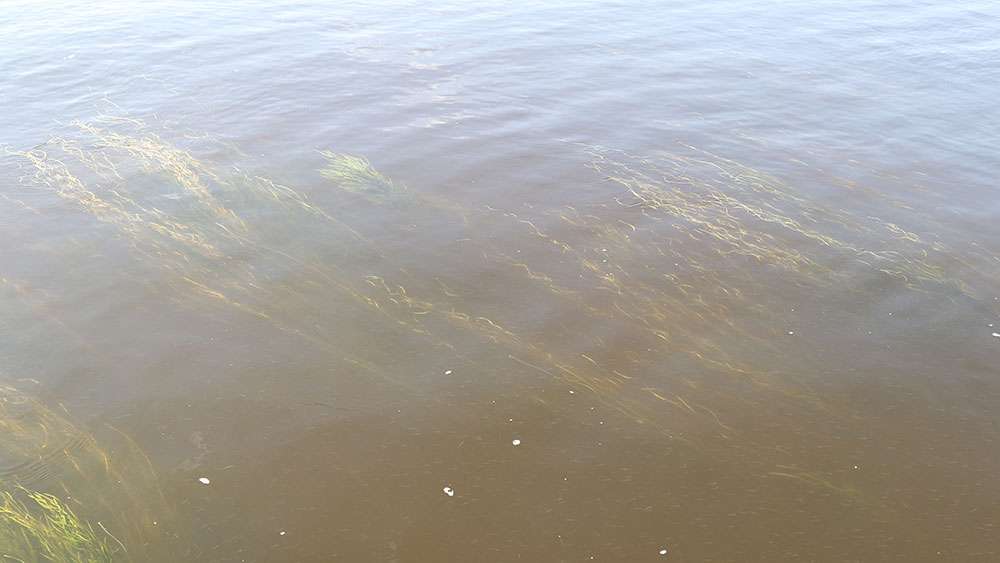
“Anytime you have a saddle, especially in a current situation, that’s a big-time feeding opportunity for bass,” he said.
In all honesty, I’d be shocked if a dozen of those baitfish saw the next sunrise. Why? Because a pile of predators — smallmouth, largemouth and a few hostile yellow perch — were doing their best to fill their bellies.
We got a good look at many of them, but success followed a frustrating period of fruitlessly watching furious feeds — the kind marked with white-water explosions, torrential bait showers and several free jumpers rocketing to the surface, jaws open and pedal to the metal.
Notwithstanding a few random pops, the bass seemed to be making coordinated assaults where they’d rush the baitfish to flush them from their grassy hiding spots for open-water gorging. Any fleet-footed baitfish that escaped those initial runs were driven topside for easy pickings.
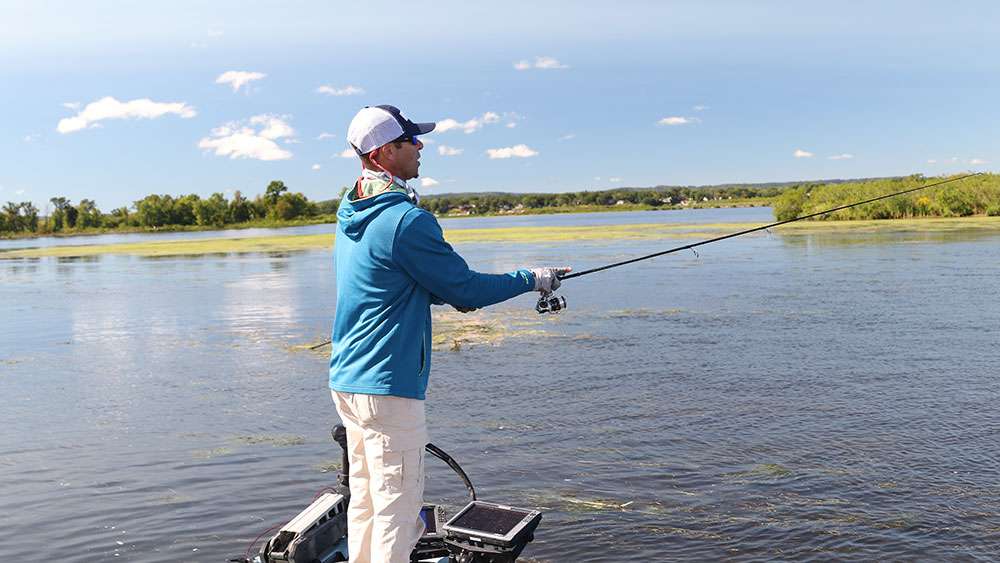
A taste for tiny
At first blush, one might assume that hyper-aggressive fish frequently blasting clouds of bait would all but guarantee a straight-up stickfest. Truth: It does not; in fact, it can be pretty challenging — until you learn the rules of the game.
After 10 minutes of head scratching, Iaconelli stopped casting, stared at the water and nodded with gleeful realization: the fish wanted only the mini meals.
“That’s happened to me a million times in my career where the fish are so dialed in on the exact size of that forage,” he said. “If you throw normal size baits, it’s useless. You have to go down in size to what they’re eating.”
On this day, Iaconelli caught a bunch of smallies and a handful of largemouth to 3 pounds on a bit-down swimbait and a Rapala DT6. In similar scenarios, he’s had to drop down to ultralight baits like a No. 5 Shad Rap, a 3/16-ounce Rapala Ultralight Rippin Rap, a No. 5 Husky Jerk or a 1/16-ounce Rapala Floating Minnow.
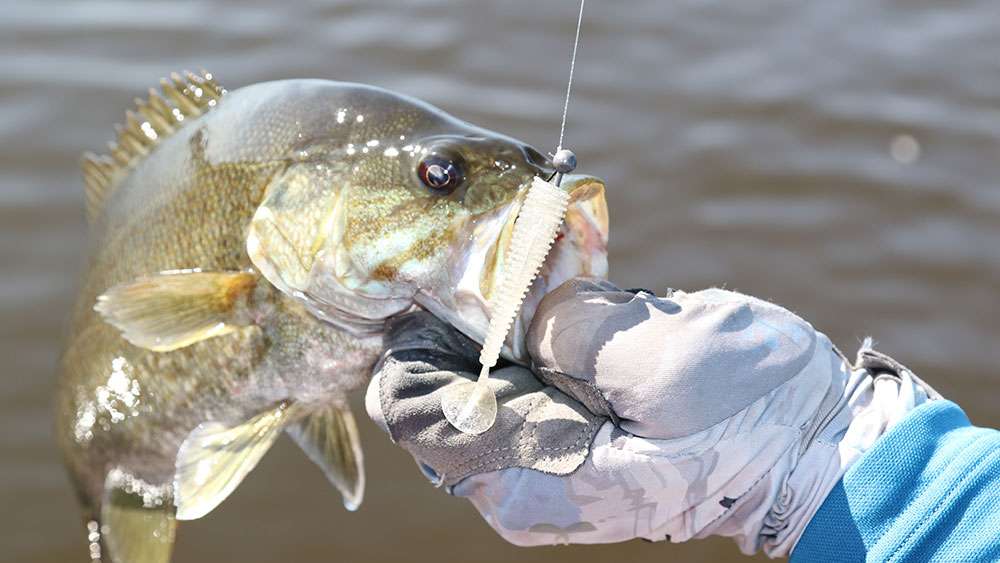
With soft plastics, like a 4-inch Berkley Havoc Beat Shad, Iaconelli won’t hesitate to bite off an inch and a half to two inches of the plastic for the right profile. Lead head size drops too; usually a 1/16- to 1/8-ounce depending on depth and how far he needs to cast.
Whatever his choice, spinning gear facilitates casting the lighter baits.
In addition to downsizing his offerings, Iaconelli also switched from braided line to 6-pound fluorocarbon. He’s fared well by topping braid with a long fluoro leader, but in picky times, straight fluro serves him well.
“You wouldn’t think that in a stained scenario (like a Mississippi River tributary) it would matter, but when there’s a lot of fishing pressure, they get very aware and you have to downsize,” he said.
If the bite dwindles, or if he simply can’t beg a bite on even the small baits, Iaconelli knows he might coax reaction bites by leaping to the other end of the spectrum.
“I’ve seen times when they’re on 3-inch shad, but there’s so much bait there, that it’s sometimes better to go bigger and brighter, like a pink fluke style bait,” he said.
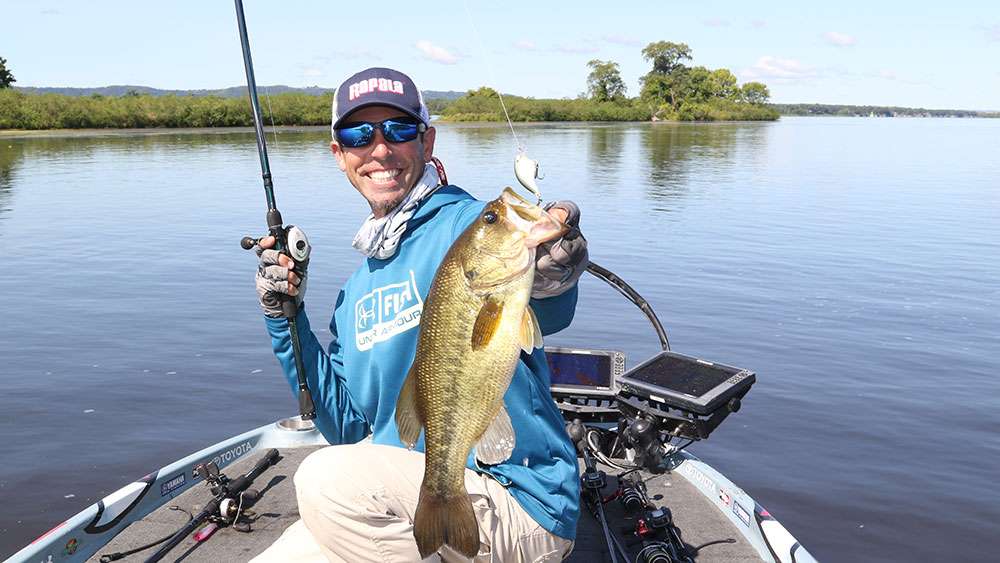
Influencing factors
It was early fall and the bass were transitioning into that seasonal feeding frenzy; but the principles of this scenario hold true regardless of where you are on the calendar.
During our outing, a barge exiting the side channel passed us by a comfortable berth; but when its wake washed that saddle, it was like someone flipped a light switch. The rush of moving water displaced hiding baitfish and the bass seized on this window of opportunity.

Same thing happened whenever Iaconelli made a significant move. While we drifted, scores of baitfish would shelter on our shadow side, but sudden pressure wakes sent them dashing for the grass.
“When the fish get on that little bait, it’s when that bait repositions that they start feeding,” Iaconelli said. “I’ve seen bass boat wakes and wind gusts trigger the fish to feed.”
Light penetration also factors here, as the baitfish tend to sink lower in the water during sunny times and rise to surface when cloud cover dims the scene.
“That can literally change as you’re fishing, Iaconelli said. “You really have to be alert and aware.
“In a lot of fishing scenarios, you’re just going down the bank and fishing whatever’s in front of you. But when you’re in that baitifsh scenario, you have to be like a hawk; you have to be looking left, looking right; looking left, looking right. You’re going to get more bites if you’re aware.”





